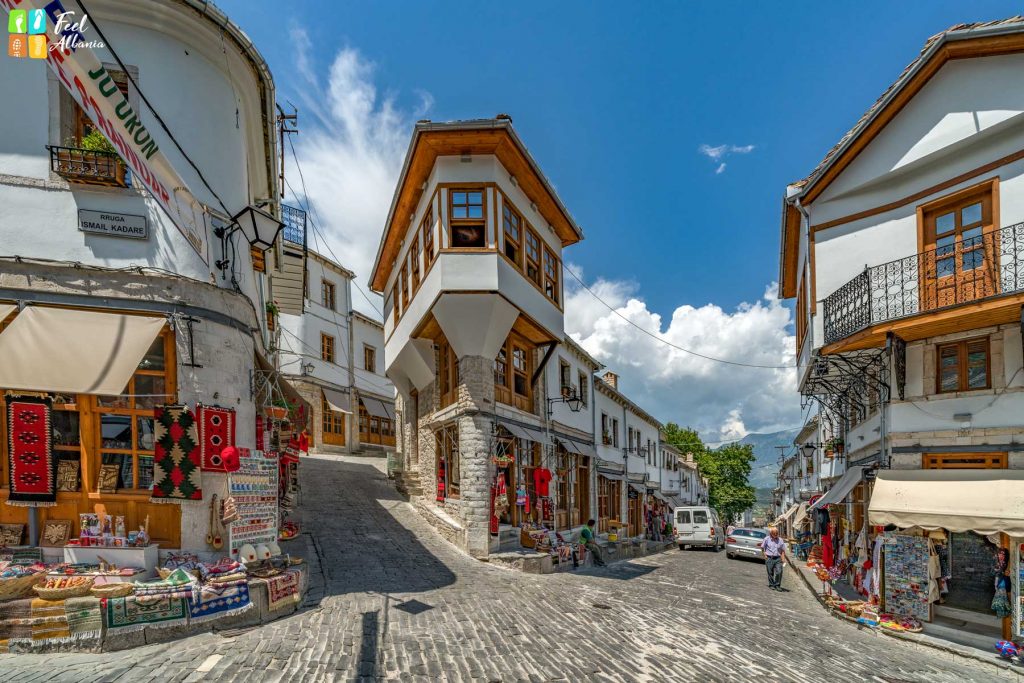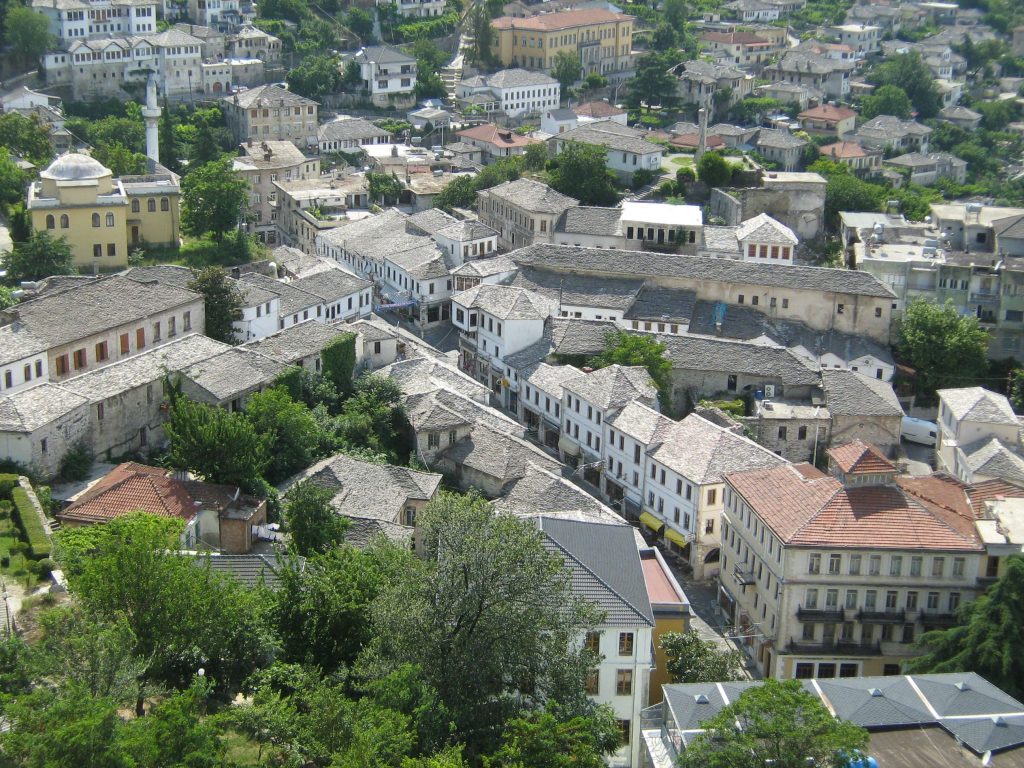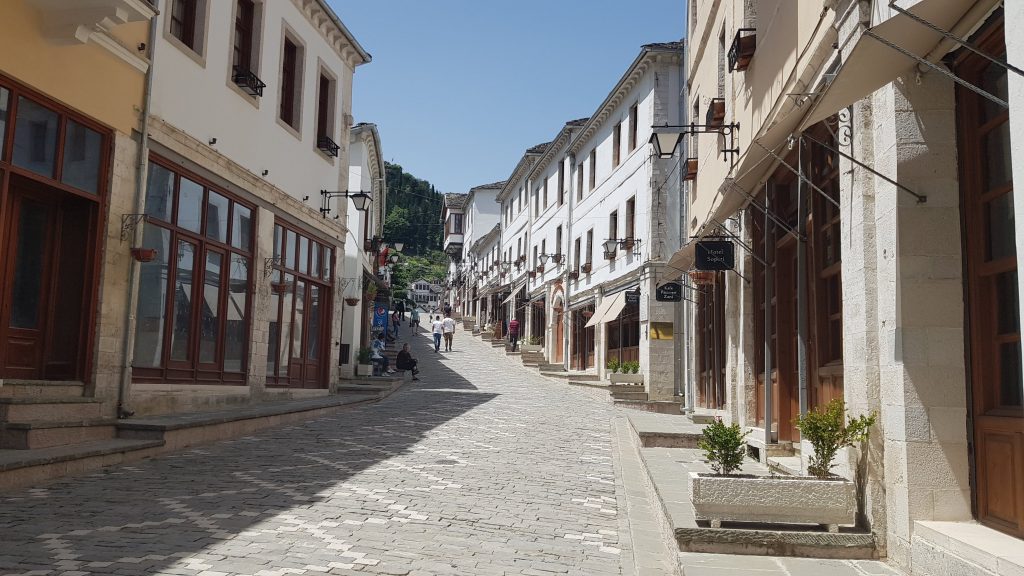The Bazar of Gjirokastra (Pazari) has been a market area since the ottoman times, that is, from the 17th century until the later reconstructions in the18th and the 20th century. Initial information about the Bazaar is found in Evlia Celebi records from the 17th century about all that was happening outside the castle walls). From 1944 till 1990’s was used as a market place serving both locals and tourists. In 1990s and during the crisis following the collapse of the communist regime and the centralized economy the Old Bazaar faced a critical abandonment.
After 2000 it started to cater for tourists again as the owners had begun to earn property titles once confiscated by the regime and revitalized the place. The bazaar is related with the name of on ottoman governor who started the project of the bazaar since 17th century and who planned the construction of the mosque too. It is one of the 8 oldest districts of Gjirokastra always in constant reconstruction due to its ancient and monumental status as a UNESCO world heritage. The bazaar in its present form was built about 500 years ago.
It is designated an Architectural Ensemble, as per the proclamation of the area and historic centre of Gjirokastra as a Qytet Muze (Museum City) in 1961. This is the highest level of protection accredited in the country for heritage sites by the respective institutions, hence the Ministry of Culture.
The Bazar of Gjirokastra is the centre of the historic city, which since 2005 is inscribed as a UNESCO world heritage site under the name:
Historic Centres of Berat and Gjirokastra. In the UNESCO list Berat and Gjirokastra are inscribed as rare examples of an architectural character typical of the Ottoman period. The bazaar is today the most vivid area in the UNESCO city of Gjirokastra.
Around 100 active shops and business, such as souvenir shops, cafes, restaurants, small hotels and guest houses are based here mainly catering tourists and locals as well. It is the reference point for all the visitors, coming to the historic center. This location is the first one to be accessed by all the neighborhoods with radius-like alleys and routes. This complex shows the importance of Gjirokastra as a trading center in the Ottoman Times, starting from the 17th century when the bazaar was projected. It has been the heart of the city of Gjirokastra in the 18-19th century.




